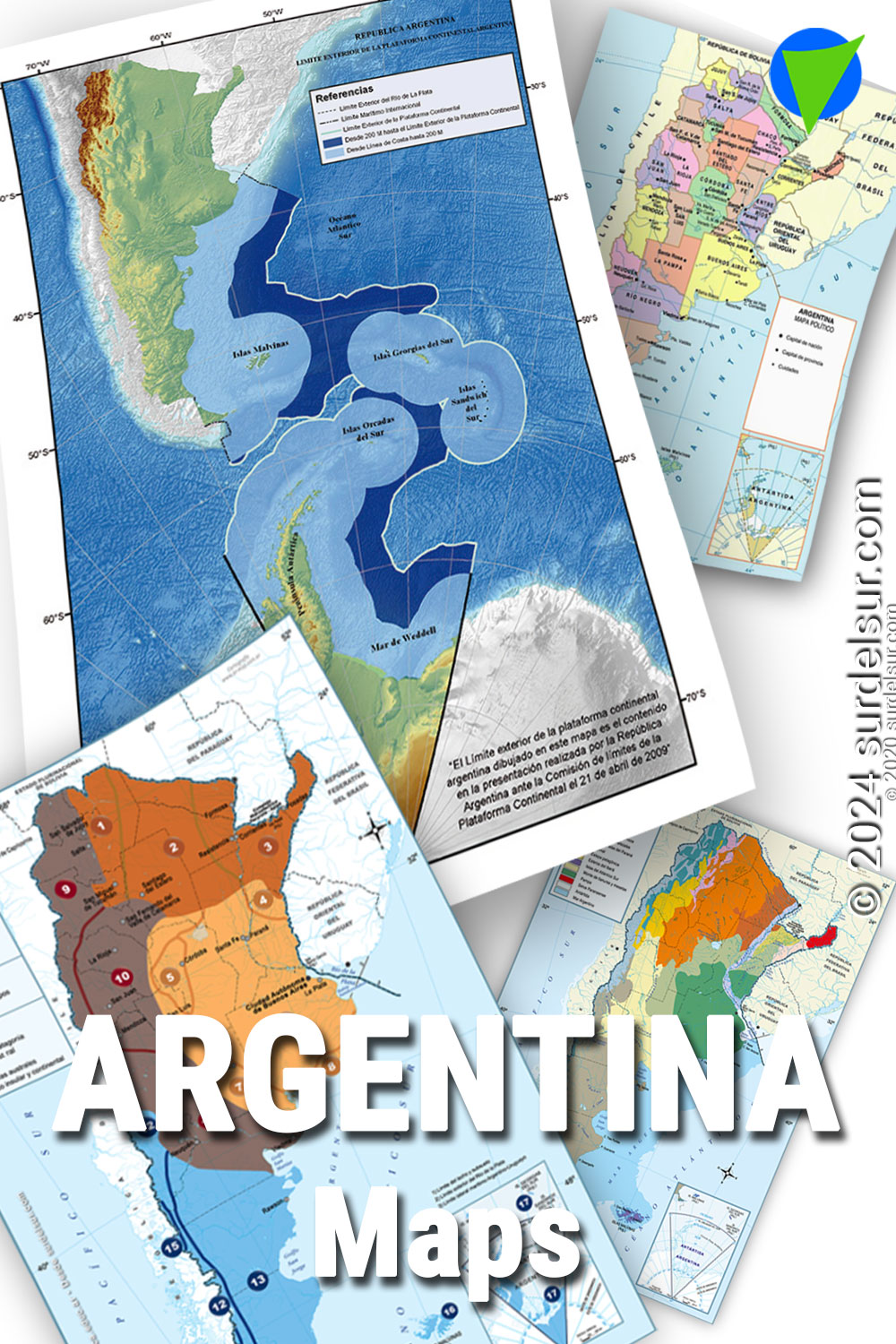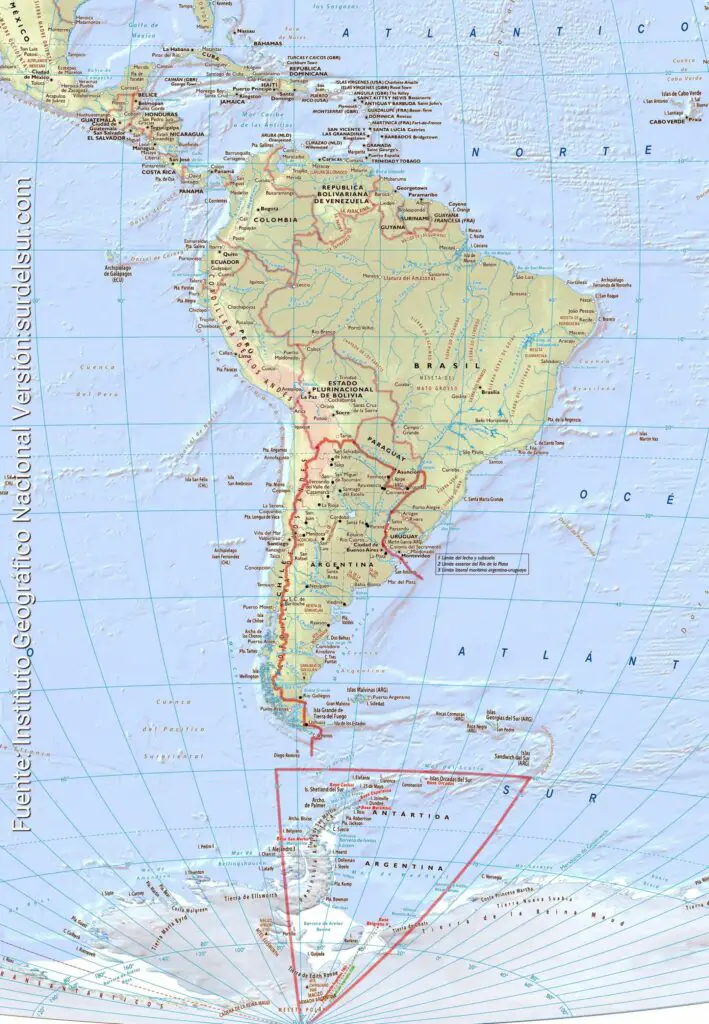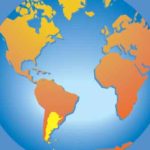Argentina in the world is located in the southern hemisphere, south of South America. Argentina has the 8th largest area in the world, the 2nd largest area in South America, and is the largest Spanish-speaking country.
CONTENT
What place does Argentina occupy in the world comparatively?
Compared with other countries in the world Argentina, based on its surface area Argentina is one of the largest countries on earth.
8th Largest in the world
Of the 200 countries in the world, Argentina is comparatively one of the largest in terms of territory, after Russia, Canada, China, the United States, Brazil, Australia, and India. Argentina borders Chile, Bolivia, Paraguay, Brazil, and Uruguay along 9376 km.
2nd Largest Area in South America
It is the second largest country in area in South America after Brazil and the third in the population with 46,044,703 million (National Census of Population, Households and Housing 2022 Provisional results. SOURCE: INDEC)
1st in Surface Area, among Spanish-speaking Countries
Argentina in the world is the largest Spanish-speaking country by territorial area. It is one of the countries with the largest area, but paradoxically, it is one of the lowest demographic densities.
Argentina in the World is located in South America
As we mentioned before, Argentina is located in the Southern Hemisphere, south of South America.
More precisely, it is south of the equator and west of the Greenwich meridian. As seen on the map, it borders 5 countries: Chile, Bolivia, Paraguay, Brazil and Uruguay. Its perimeter is completed with 5117 km of coastline on the Atlantic Ocean
In which continent is Argentina located? It is a bicontinental country since it occupies part of South America, which corresponds to the emerged American part; and a part of the Antarctic continent.
In the past, it was said that Argentina in the world is located in a region, perhaps, too southern. Perhaps for this reason, he suffered the consequences of a certain isolation. Since, if we take into account that the most important economic centers are in the northern hemisphere, it is evident that Argentina was a distant country.
The truth is that today, thanks to technology and new media, the previous “distance” has been overcome, and the location of Argentina in the world no longer depends on its geographical location.
See more of the Best Maps of Argentina >>
Features Argentine Territory
The territory of the Argentina Republic has an area of 2,791,810 km2 under effective sovereignty, which corresponds to the emerging American portion. Taking into account the Antarctic part claimed a total area of 3,757,407 km2.
The Argentine Sea is an epicontinental sea that extends from the Río de la Plata to include Malvinas islands, is located on a continental shelf up to 200 m deep, covering an area of 1,000,000 km2, one of the largest in the world.
The Río de la Plata, considered the widest in the world, has a length of 275 km and its estuary covers an area of 35,000 km2. It empties into the Atlantic Ocean and presents between the endpoints of its mouth a maximum width of 200 km.
The Andes Mountains, the natural border between Argentina and Chile, in Argentina, has the highest hills on the continent. One of its peaks, Aconcagua of 6960.8 MASL., located in Mendoza Argentina, is the second highest in the world after the system of the Himalayas in Asia
In the Puna de Atacama in the Province of Catamarca, the Ojos del Salado, shared by Argentina and Chile, it is the highest volcano in the world and the second-highest peak in the continent with 6891.3 MASL.
Read more about Dimensions of Argentina: Surface area, Length, Perimeter >>
Demographic characteristics of Argentina
Argentina in the world, nowadays, accounts for 0.6 percent of the whole world population.
The world demographic development rate remarkably increased as compared to the earliest population data available. However, a relatively new trend arose: the population of developed countries started to decrease as against the populational rise in developing countries; therefore, the world demographic development rate is not homogeneous.
Furthermore, it is necessary to bear in mind that scientific advances had a strong influence on the decrease of death rates and the lengthening of life.
Population Growth Trends
Argentina has a population growth rate similar to the developed world. Registers a slight downward fluctuation, if the period 1980-1991 is compared with 2001-2010. In the first case, the average annual growth rate was 1.47% compared to the second period with an annual population growth of 1.14%. And it differs from other Latin American countries, which are characterized by a higher rate.
Argentine birth and death rates are close to the world average, yet its population density is markedly lower.
Read more about Argentina’s population>>
Bibliography
- Cámara Argentina de Comercio y Servicios: América del Sur y la Argentina: una comparación regional, Documento completo
- INDEC: Instituto Nacional de Estadística y Censos. Censo 2010
WAS THE ARTICLE USEFUL TO YOU? SAVE IT!!
READ THE RELATED ARTICLE…!









